2010 Yamaha FX Nytro Review
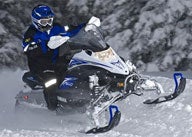
Yamaha's base mogul runner gives you plenty of bang for your buck
We have yet to see a “cheap” Yamaha. Less expensive? Certainly. A comparison between the “base model” 2010 FX Nytro and its pricier siblings — the 2010 Nytro RTX and Nytro RTX SE — drives home the point that Yamaha does not make cheap sleds, but simply less expensive versions. All three share key components like Yamaha’s latest lightweight tunnel design, a very potent 130-hp Yamaha triple cylinder 4-stroke motor, over-the-engine steering, the latest Yamaha front end design, revised handlebar heating and narrow race-styled seat.
Engine Type:Horizontal In-line
Cylinders:3
Engine Stroke:4-Stroke
Valve Configuration:DOHC
Displacement:1049 / 64
Starter:Electric
Turbocharged:No
View Full SpecIf your ego doesn’t rule your wallet, you can have a very well designed Yamaha big bump runner for more than a grand less than the top-of-the-line RTX SE model. Granted, you will give up the more premium adjustable shocks on the suspensions, but the “base” FX Nytro still provides the same 8.5 inches of front-end travel and 14.5 inches of rear suspension as the costlier models. If you are a dead-nuts snocross caliber rider going wide open throttle 90 percent of the time, then you’ll want the RTX SE. Heck, you’ll need it!
But, at US$10,699 Yamaha’s basic FX Nytro makes sense for most of us. Keep in mind; what Yamaha considers “basic” in the Nytro would be premium in some other sled lines.
One-Liter Sophistication
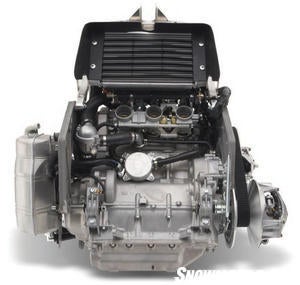 The FX Nytro Genesis 130FI powers all versions of the Nytro in 2010.
The FX Nytro Genesis 130FI powers all versions of the Nytro in 2010.
Tucked out of the way under that sloping Nytro façade and rearward of the double A-arm suspension arms lies a very polished motor. The FX Nytro’s “base” Yamaha Genesis 130FI 4-stroke triple powers all of the Nytro models, including the bad boy, racer-like RTX SE. This is the exact same powerplant for all three models, which means that the thousand bucks you save by going with the base Nytro is not devalued dollars!
This is Yamaha’s power triple. There is a denatured version with subtle internal differences used in the new Vector and Venture GT. The Nytro engine is anything but subtle. When you grab a handful of throttle with this motor, you know it — right now! At 130-horsepower, the Genesis triple kicks in as quick as computer synapses can fire a digitally controlled ignition and force feed three 41mm Mikuni fuel injectors. Response rates in the “right now” category, so hang on. You’ll feel a torque rush and a hard hit in the all-Yamaha clutch department. There’s nothing subtle happening from your fanny to the snow.
For you “bang the throttle and hold on” types, this will be rush enough to justify the purchase. If you like your sled to hit hard and give you ski lift, you get it. If you like to have the skis on the ground to help steer, you might want to check the suspension set up and closely read the manual.
You’ll note that the Nytro models feature what Yamaha calls over-the-engine steering, which is a snocross-derived feature allowing the engine to be tucked back in the chassis and the rider to work bumps standing up. The entire Nytro design centers on snocross concepts, which want to have the rider upright and forward to work the runningboards for side-to-side action when airborne and the throttle for in-air nose to tail attitude correction. It works. But you better be suited to wanting such a ride-style. This is not a subtle sled. It is meant to be ridden hard.
The FX Nytro chassis design features the latest lightweight aluminum tunnel design. The runningboards tip at 11-degrees to move through snow and bumps easily without getting hung up. First found on the early limited edition RTX SE models, the new tunnel permeates the Genesis 130FI model matrix, including the stretched XTX model and new elongated tunnels of the mountain line. Despite the overall length, all versions of this tunnel share revised snow evacuation and boot grip punch-outs. These punched out areas also serve to reduce overall weight — no metal, no weight!
Shock Package
The front and rear suspensions come with varying degree of shock absorber control and sophistication, but the fundamental suspension design concepts work for all three models from base to midrange RTX to top line RTX SE. Where the top model RTX SE has the latest Fox FLOAT shocks, the base Nytro comes with 40mm high-pressure GYTR dual clicker shocks. Check them out. These “base” shocks are pretty darn good.
Don’t feel cheated if you opt for the FX Nytro. It has the latest FXG2 front suspension geometry. Yamaha claims the new front end offers improved trail manners from relaxed caster, which is said to improve steering response. Some of that also comes from the bite of the over-engine steering and the positive feedback you get from the saddleless plastic skis.
Fine-Tuning Differences
| 2010 Yamaha FX Nytro Specs | |
| Engine | Yamaha Genesis 130FI; liquid-cooled, 1049cc 4-stroke triple; Mikuni 41mm fuel injection |
| Horsepower | 130 |
| Drive | Yamaha YVXC variable ratio drive and driven |
| Front Suspension | Yamaha double wishbone FXG2; 8.5-inches maximum travel; 40mm GYTR dual-clicker shocks |
| Rear Suspension | Yamaha Dual Shock CK; 14.5-inches maximum travel; C40 gas shocks on front and rear suspension arms |
| Brake | Yamaha 4-piston hydraulic with lightweight disc |
| Length | 110.4 in |
| Width | 46.4 in |
| Height | 45.6 in |
| Ski Stance | 41.3 |
| Track | 15 x 121 x 1.25 Camoplast RipSaw |
| Weight | NA (522 lbs 2009 FX Nytro) |
| Fuel Capacity | 7.4 US Gal |
| MSRP | $10,699 |
2010 Yamaha Nytro RTX SE Review



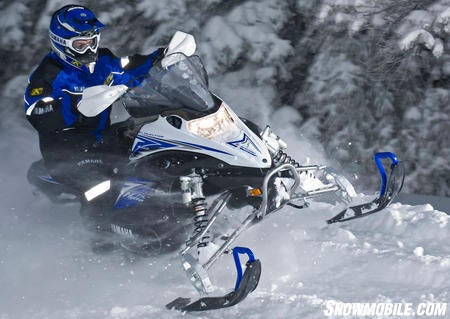
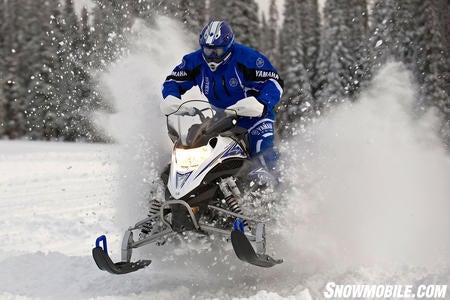
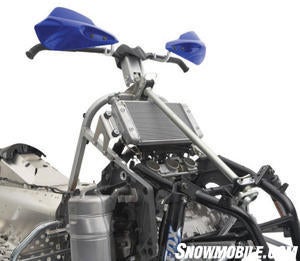
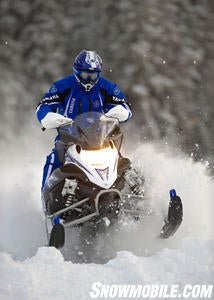
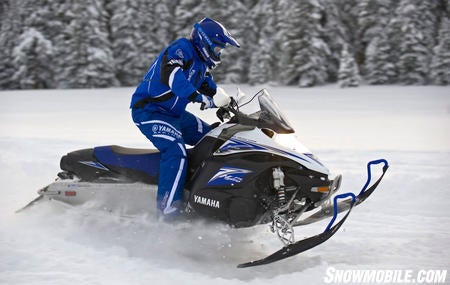


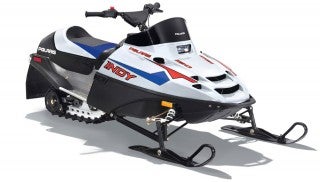


 Your Privacy Choices
Your Privacy Choices